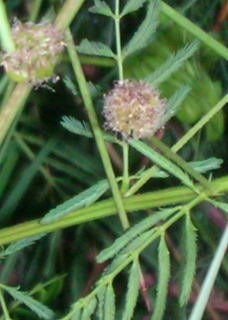 What’s blooming in the area: Apache plume, Illinois bundle flower, datura, white evening primrose, velvetweed, white sweet clover, golden hairy aster, Queen Anne’s lace, bigleaf globeflower, bindweed, goat’s head, toothed spurge, purple phlox, purple coneflower, daylily, roses, sweet pea, bouncing Bess, zinnia, trumpet creeper, silverlace vine, muhly ring grass. More corn has tasseled, apples visible in some orchards.
What’s blooming in the area: Apache plume, Illinois bundle flower, datura, white evening primrose, velvetweed, white sweet clover, golden hairy aster, Queen Anne’s lace, bigleaf globeflower, bindweed, goat’s head, toothed spurge, purple phlox, purple coneflower, daylily, roses, sweet pea, bouncing Bess, zinnia, trumpet creeper, silverlace vine, muhly ring grass. More corn has tasseled, apples visible in some orchards. What’s blooming in my garden, looking north: Black eyed Susan, blanket flower, golden spur columbine, lance-leaf coreopsis, chocolate flowers, perky Sue, Hartweg evening primrose, fern-leaf yarrow, Mexican hat, butterfly weed, miniature rose (Rise and Shine).
Looking east: Biennial yellow evening primrose, California poppy, winecup, small and large flowered soapworts, coral beardtongue almost bloomed out, Flanders poppy, sweet alyssum. Hollyhocks have few flowers left, but have new basal leaves, both here and along roads.
Look south: Cosmos; Blaze and rugosa roses.
Look west: Perennial four o’clock, white spurge, catmint, blue flax, sea lavender, Russian sage, purple ice plant, caryopteris.
Bedding plants: Dalhburg daisies, marigolds, sweet alyssum, snapdragons, petunias, profusion zinnias, supersweet 100 tomato, zucchini.
Animal sightings: Power line bird, long tailed bird, green hummingbird, gecko, ants, grasshoppers, white cabbage butterfly, bees on purple flowers, snake sprawled in the drive.
Weather: Clouded over early Sunday, rained at noon and again at midnight. By end of the week, weather returned to hot afternoons moderated by storms that passed by and cool nights.
Weekly update: A couple years ago, something resembling mimosa materialized in my septic field. Since it was in a place it could do serious damage, I needed to know what it was. My eastern neighbor has a Siberian elm growing over his tank that got started from ignorance, and now he can’t kill it.
The only thing I knew was that it couldn’t be mimosa, which naturalized in the southeastern United States (zones 6-10) and prefers acidic soil. Whatever I had emerged where the plasterer and mason mixed their mortar and intensified the already alkaline soil.
I looked in various wildflower books with no luck. Then this year I caught it in bloom, and now know it’s Illinois bundle flower.
The name’s misleading, since it’s a tall grass prairie plant found between the Mississippi and Rockies. André Michaux just happened to be in Illinois when he found it in 1803. I isolated it by it’s similarity to prairie mimosa which exists elsewhere in the southwest. Acacia angustissima has brown stems, while the plant in my yard, desmanthus illinoensis, has green ones.
Bundle flower settles in disturbed soil like the construction site over my septic field. It’s near a suckering rugosa rose and some white evening primroses. It and the rose are the only things the gopher didn’t kill in that area two years ago, probably because the root contains an insecticide, gallic ester myrictrin.
While bundle flower indisputably can grow in my yard, it’s not obvious how it got here. The most prosaic answer is the seed is offered by Plants of the Southwest in Santa Fe. Some neighbor may have bought it, and the wind decided.
However, mere availability does not explain why someone would buy it. While the leaves are nice, the flower balls are no more attractive than Dutch clover which they resemble from a distance. The answer may lie in the root, which also contains dimethyltryptamine, an hallucinogenic drug used as a substitute for South American plants in the shaman’s ayahuasca cocktail that combines harmala alkaloids with DMT.
This narrows it down to some neighbor beyond the big arroyo touched by the Santa Fe lifestyle.
The plant isn’t proscribed though the government frowns on DMT. In fact, it’s recommended for restorations because its legume roots shelter bacteria that stabilize soil nitrogen. High protein content makes it good range feed, and quail favor the seeds. I don’t remember if it was here before or after the quail, who migrated after the Cerro Grande fire of 2000. It’s possible they brought it, or that it was used to reseed the damaged Jemez.
All I know is it first appeared in 2003.
I’m still concerned about leaving it over the septic tank, with its "large, fleshy roots," its "deep taproot." The shrub isn’t supposed to get more than 3' or 4' high, and mine are about 24" in this cool summer. If the roots mirror the plant, then it’s probably safe until it spreads too far. The existence of the poisonous root is justification enough to let it grow if it protects the rose from the gopher.
Notes:Fleshy root, Klaus Trenary, "Desmanthus illinoensis" (1997). He has the best on-line description with details on the active agents and uses.
Deep taproot, "Illinois Bundleflower (Desmanthus illinoensis)," available on-line.
No comments:
Post a Comment